DBL Post
There are two expanders for the Batumi - one is 3 hp and now another is 1 hp. I would build this but make it into a 2 hp strip. These odd numbers are a PITA.
Big up respect to @solitud for a smooth transaction and an insightful conversation. Ø 5.00 (1 Vote) Average Rating
If this goes ahead as an actual PCB/Panel well colour me interested!
-- basicbasic
Well no pcb will be involved, it's just a panel with three switch! Maybe I'll do a small run of panel just to reduce cost. In case I'll update here!
Cheers!
If this goes ahead as an actual PCB/Panel well colour me interested!
@Maffez nice easy purchase. Item was well packed and great comms. Recommended :-)
uh really? nice one, thx for the tip! gotta look out for that, mine now finally works with one screw...i had to try all spots and then fit all the rest in, according to the tempi :D
oh sorry about that, mine does fit well with two screws, you should email make noise, i read on muff's they were gonna get new panels or something...
tempi is a great module .. what´s not great is that the holes are so damn off that i cant fit in none of my 5 racks, not even one screw. except one with gliding nuts, and there´s no space nor need for it there. bummer.
Can you make it smaller? I only have 0.5hp free in my case.
-- sempervirent
ahaha I'll try! Maybe 1U also...
Can you make it smaller? I only have 0.5hp free in my case.
DIY builds are no official Mutable Instruments modules.
That is the reason we reassigned it to other/unknown.
Beep, Bopp, Bleep: info@modulargrid.net
Hi!! I'm building my first system, I'm waiting for the arrival of this modules but I wonder if you think I'm missing something or is there something redundant.
Thanx in advance;)
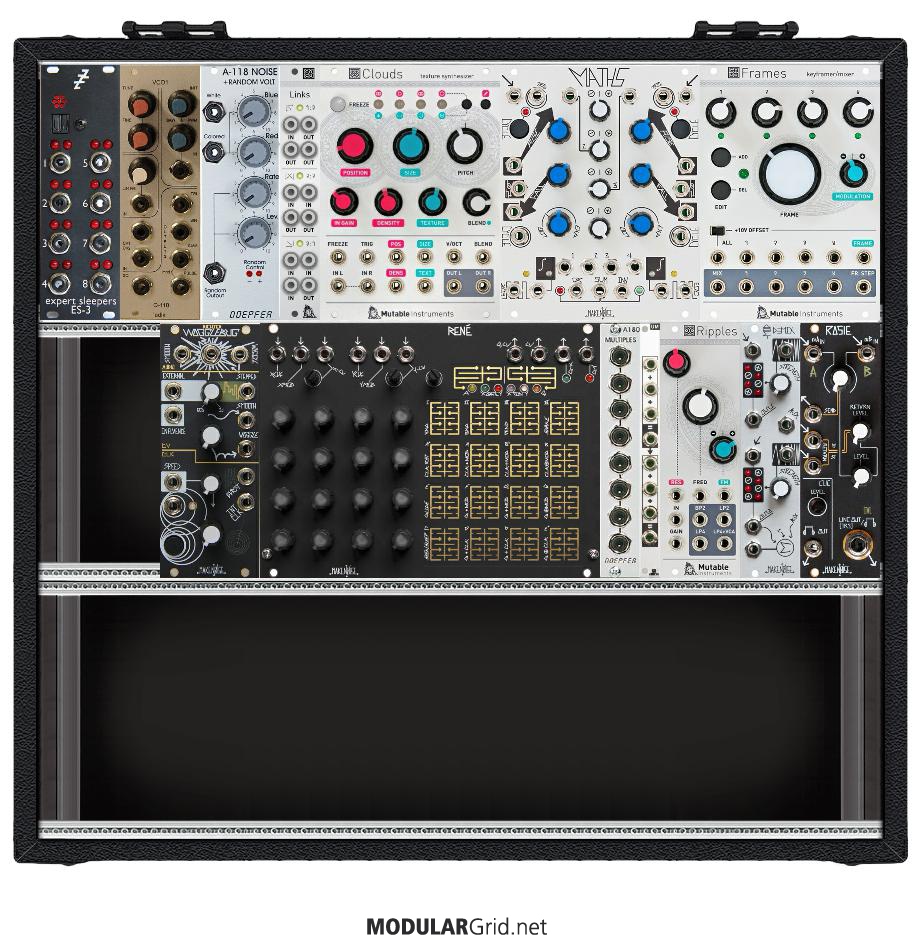
How will the signal of a channel be sent to the Cue Mix?
A) by muting the channel (using the channel level), or
B) by switching Aux to "Pre" (using the Aux level), or
C) using dedicated buttons on the expander module?
Thanks @chiavere for the great deal and fast shipping on the Blue Lanten subharmonics generator.
Had a smooth, positive experience working with @yufo
Would work with him again for sure.
Thanks, @grieve for quick shipping and a friendly and easy transaction with my mix mult.
This will be my new 9 U Rack, its actual emty
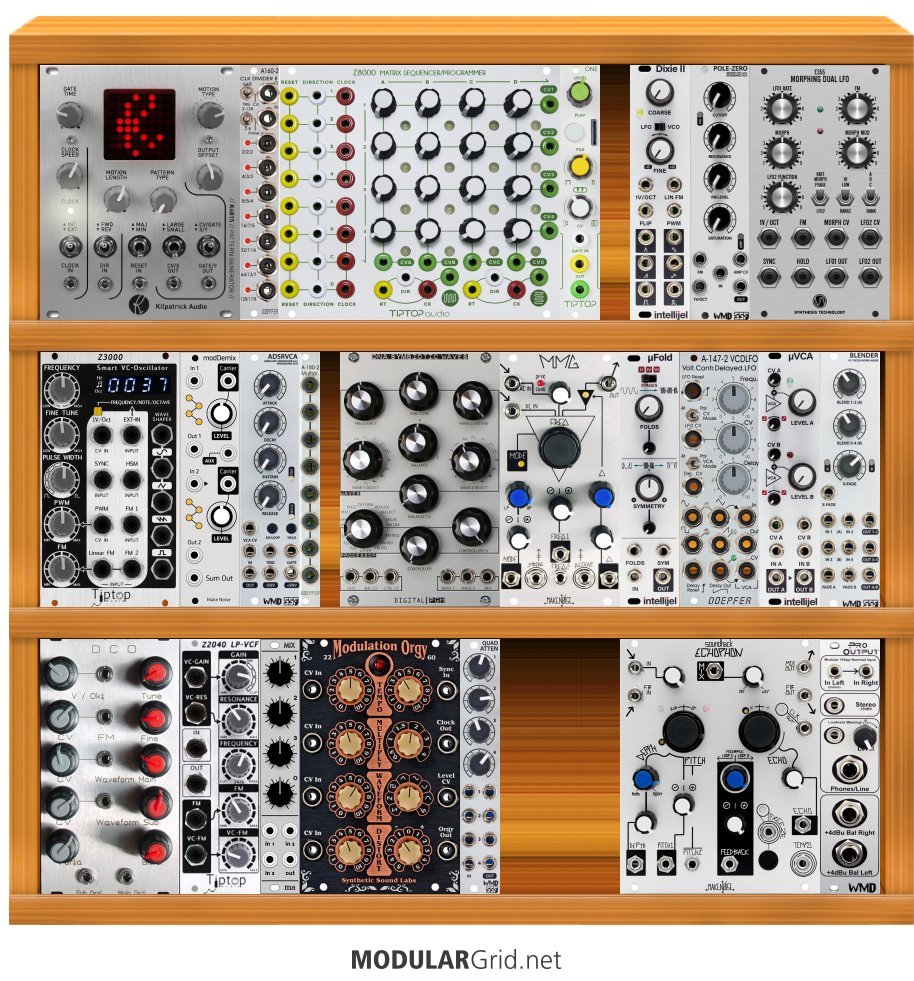
Its primary a Synth, some Lines below are the 6 U Rack that wants to be a Drummachine, need here some suggestions too.
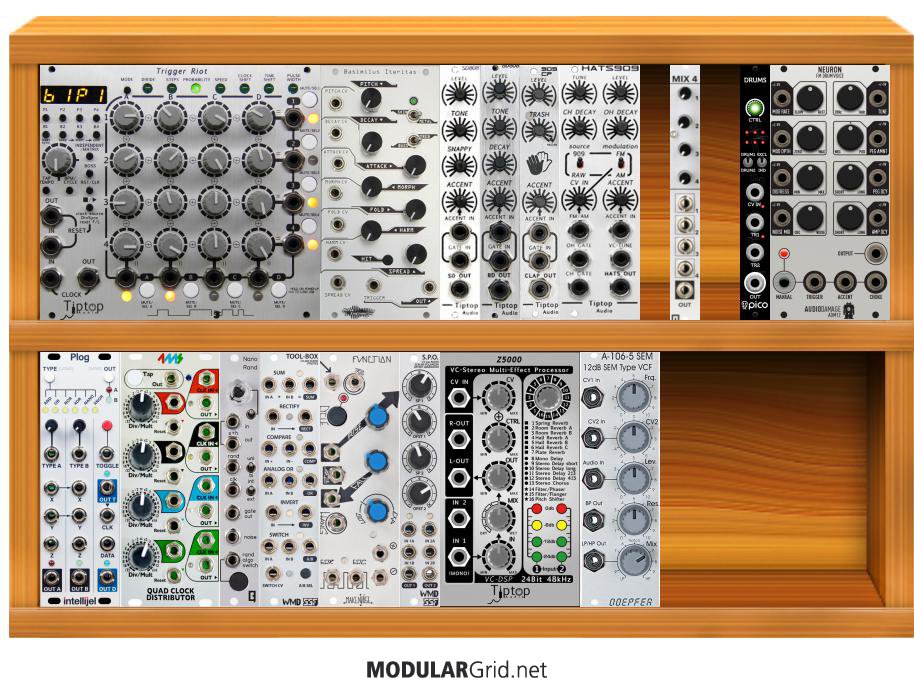
A idea about the Sequencer:
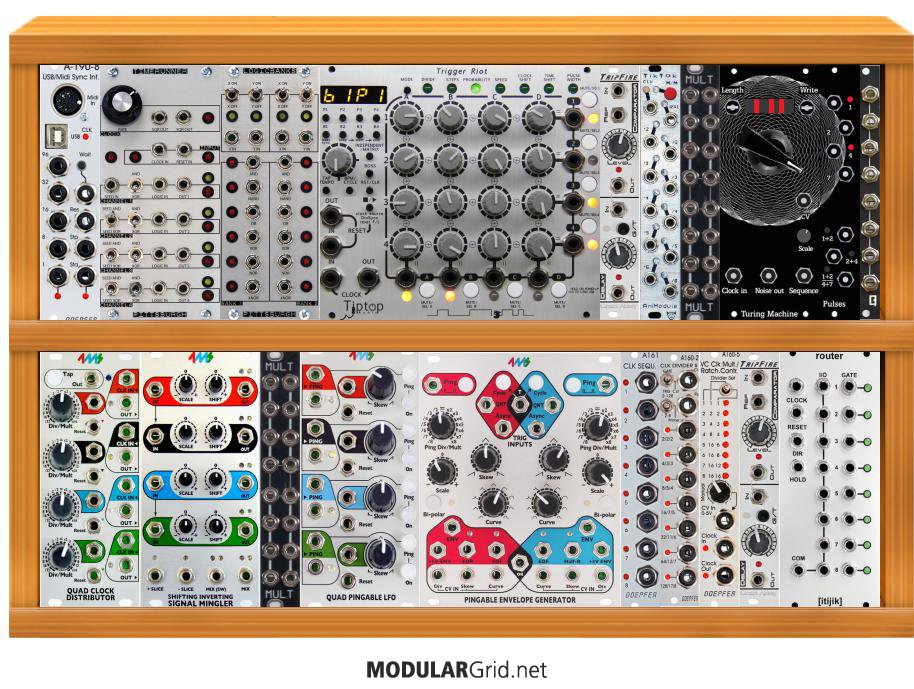
(nice or too much?)
9U is controlled by the PC over Midi, later the 9U will control the Sequencer by the clocking from it.
Musicstyles are mixed electronic from Experimental, Drum n Bass, IDM, BigBeat, Dubstep to Dub.
Thanks Feedback.
Bought a Dwarfcraft Yep module from @MogwaiSamurai . Good sale for me.
Thanks guys, I just measured 43mm deep with backpack and cables, specs updated. (Power specs were updated to 100ma a few weeks ago, as a rough estimate.)
and it´s 5 cms deep with all the packs and cables ...
The pro account does this!
https://www.modulargrid.net/e/users/pro_index
Beep, Bopp, Bleep: info@modulargrid.net
Thanks @moket808 for selling me your Korgasmatron II. Nice doing business with you!
Hi Modulargrid-Guys,
want to make a 5 Row Rack (5x3U) because i want to have my two Racks in One.
Its the best way to have booth in one Editor.
1x 9U and 1x 6U = 15U = 5 Rows or separated 2 Cases.
Don´t want to switch between my actual two Racks, so the best way was add 3 + 2.
But isn´t possible
u optimize zhis pls?
This appears to be a duplicate of this entry: https://www.modulargrid.net/e/random-source-serge-wave-multipliers-vcm
-- 337isTotally missed that somehow...I'll delete as soon as the site realizes I've removed the duplicate from my rack.
-- ryangaston
I marked this as unlisted because it is a duplicate. Here is the original listing:
I'm going to put it back as unlisted again so that no one else uses it. Thx
This appears to be a duplicate of this entry: https://www.modulargrid.net/e/random-source-serge-wave-multipliers-vcm
-- 337is
Totally missed that somehow...I'll delete as soon as the site realizes I've removed the duplicate from my rack.
This appears to be a duplicate of this entry: https://www.modulargrid.net/e/random-source-serge-wave-multipliers-vcm
All offers older than three month will be automatically deleted.
The sellers will be informed via private message beforehand, so they have a chance to b.u.m.p. their offers (and prevent the deletion).
Beep, Bopp, Bleep: info@modulargrid.net
I picked up an assembled thonk reverb kit from @meltermusic. Good build execution and pleasant transaction. shipped quickly, packed well. My thanks.
Hey AudioResearch,
Thanks for the response, pingable looks really nice. Any other more minimal in mind?
Could you elaborate on the Patch you mention with envelop/function generator, osc and offset module?
Thanks in advance,
dmtrs
I'd checkout the 4ms pingable envelope generator. It does attack and decay as this envelope does and has the attenuation control within the module via scale knob, equivalent to the pitch env initial. Curve at 12 o'clock and skew all the way CW you have the above linear envelope. Also the ping input can take the output of your clock so you can get for instance a pitch envelope of 500ms at 1/4 division if clock is at 120 bpm, which can be nice and musical and would function as the time control. Then all you do is patch the env out into the v/oct input of whatever oscillator u r using.
http://www.4mspedals.com/peg-kit.php
You can do this already if you have an envelope/function generator, oscillator and offset module, most oscillators have at least two cv inputs for frequency for this reason.
cheers!
This 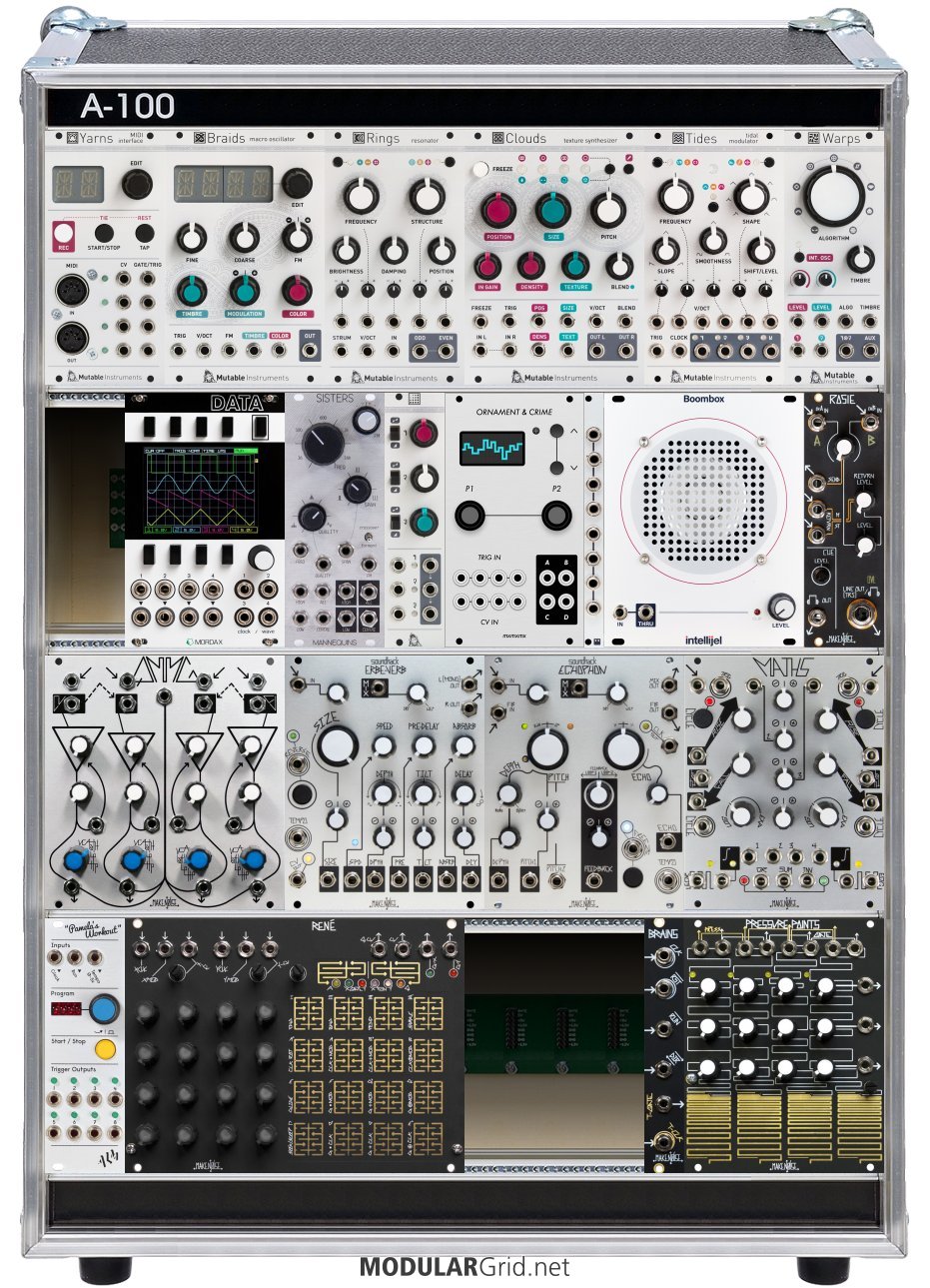 makes your picture appear inline with the text:

When in Reply/Edit mode click Markdown Syntax below to see more tricks.
Cheers
Hello there,
I am looking for a Eurorack Module for Pitch Envelope.
What I am trying to get is the functionality in an Ableton Live instrument called Analog. Here is a screenshot of this part:

The minimum requirements is for:
- a % Env Amount to increase/decrease the pitch based on the input pitch
- decay/time functionality
- CV in to trigger and Pitch in/out
Any suggestions? A DIY module would be preferable.
Thanks in advance,
Dmtrs
save your self a few thousand $'s and forget about the 2 extra rows ;)
get disting ,new wogglebug ,Function,Optomix rev2 2016
machine2 +mother32 is already a pretty powerfull setup !!
maths is great but you may get in to the "modulation trap "
to many mod sources , not enough things to plug them into ...
.....and the the spending continues
drop Pamela workout , the tiptop smart vco and eurorack FX
FX's are not really needed if you have a computer , use CVtoMIDI to control FX on your computer
cheers
https://cdn.modulargrid.net/img/racks/modulargrid_264526.jpg
Aloha All,
So this is what I've come up...and I'm asking for advice. Everything on the top row, I already own. The bottom two rows I am considering for completing my first euro rack. I've got a maschine 2, as well as a Sub 37 in my studio.
Am I missing anything? Anything unnecessary (including the racks Ive already purchased? :(
My goal is to make chill rhythms for my hip hop.
Cheers!
PS - Anyone be so kind as to tell how I may insert the jpeg of my rack into my post instead of a link?
The micro zeus only has 10 spaces with the flying bus boards. You'd have to figure out a way to plug all of that stuff in.
-- cedworth
Good point... A couple of 4ms 40's should fix that yes?
The micro zeus only has 10 spaces with the flying bus boards. You'd have to figure out a way to plug all of that stuff in.
I'd really appreciate any comments, advice etc.. for the rack Im designing as the main sequencing modular rack for my studio...
My main aim is to use this for Old School Berlin type work with some random elements
My total budget is about $6000
I spent about a month really enjoying playing with and experimenting on, a similar Mutable based rack that a client bought in and Im trying to duplicate that as best I can from memory.. as he seems to have vanished off the face of the earth!
Am I missing anything obvious? Any dumb mistakes? Any suggestions as to how to improve this.. in regards to my preferred style of music as well as integration into a Logic Pro / Numerology based Mac system?
I also have a Minilogue, DSI P12, Sub37, 3 x Mother 32s, Octotrack, Analog Keys, Pulse2, Zaquencer, Future Retro Orb & Zillion, Ultranova, Virus C and Snow Ti along with assorted FX pedals like a few H9s, Big Sky, Timeline, Infinity Looper and so on.. as well as a P6, Linnstrument and Roli Rise as Midi controllers and 3 X Motu AVB 16As for i/o into Mac...
Cheers..
Nigel
I think this would be a really smart investment as 1) it could bring in additional revenue for the site and 2) it would really make laying out racks on iPhone and iPad much nicer. ....
Had a very good experience buying from/selling to/trading with the following guys :
@Maratets
@Flesh_Candy
@ranzen
@benkk
@ranzen
@pownie
@OTHK
@manolah
I DO NOT recommend dealing with user @askthedust. Worst person I've met in this community, absolute rudeness. He doesn't sell what is being advertised.
The Intellijel module entries are controlled by them now (hence the manufacturer approved seal) so. Only they can change the info now.
have had good experiences selling to @Blancman and @freespace, both quick payment and comms